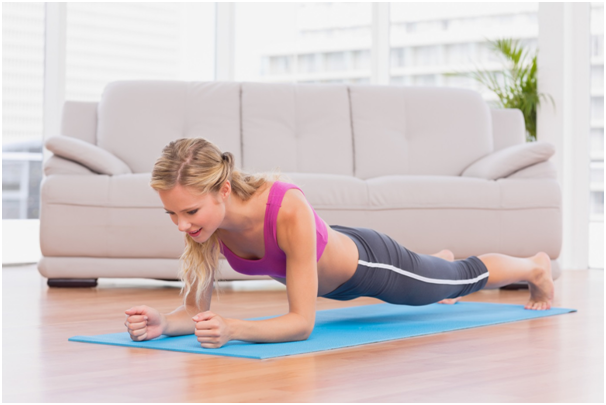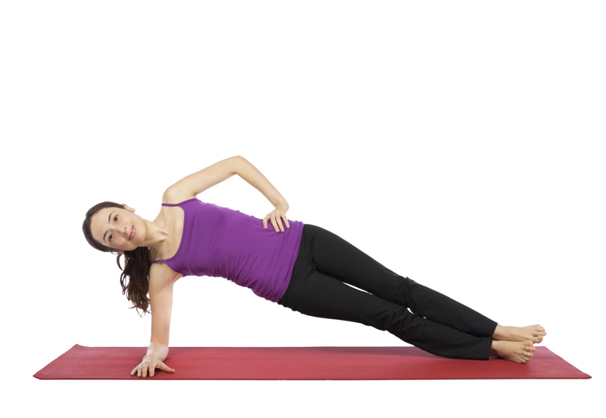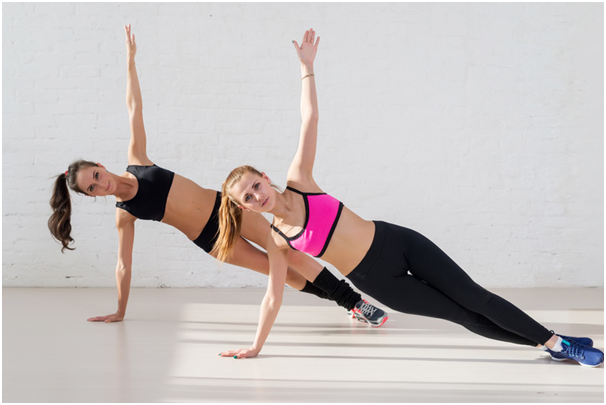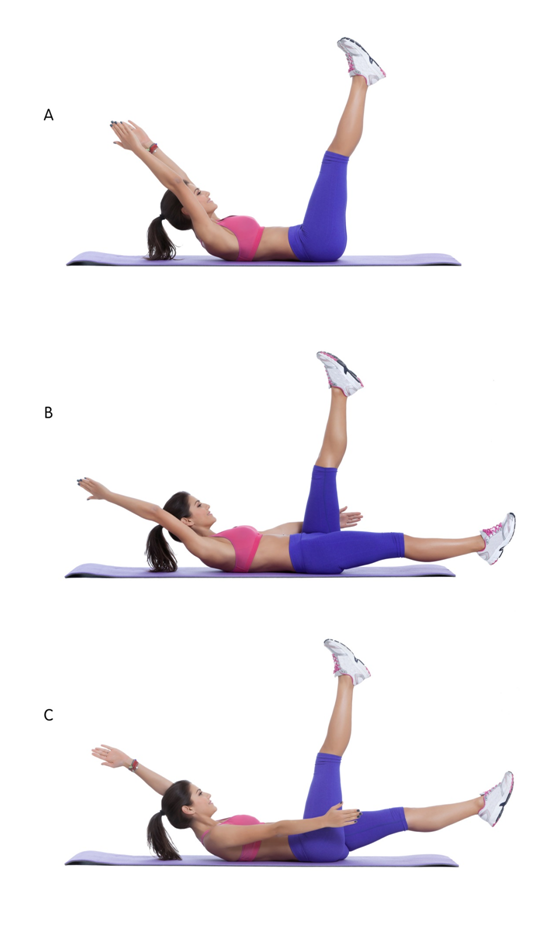Core stability is essential to riders as it improves co-ordination, reduces risk of injury and allows you to support the horse. Lucy from Ride Fit Equestrian has given us some handy exercises to build on core muscles:
The Plank
A popular and simple way to improve the strength across your upper body and core.

Start by kneeling on the floor with your hands shoulder width apart, as though you are about to do a push up. Engage your abdominal muscles. Take a deep breath in, exhale and rest your weight on your forearms, and lift your knees off the floor, so that the only part of your body that is in contact with the floor is your toes and your forearms. Keep your spine in a neutral alignment, and hold the body in this position for as long as you can. Build up from twenty seconds, to up to two minutes over time.
To make it easier: If the above exercise is too challenging, and you are struggling to keep your spine in a neutral position, keep your knees on the floor whilst you rest your forearms on the floor. Engaging your core in this position will help build your muscles sufficient to be able to perform the full plank. Gradually introduce the full plank for 10 seconds at a time.
To make it more difficult: Try the plank, but with lifting a limb, and alternating which limb you lift. Widen your stance and hold yourself up with your hands instead of your forearms, to increase the challenge. Once you are good at both of these amendments, rest your legs on a Swiss ball rather than the floor, which provides an uneven base to improve your balance as well as your core stability.
Side plank
Works the oblique abdominal muscles and helps to prevent the dreaded ‘collapsed hip’.

Lie on your left side, with your body in one long line. Take a deep breath in, exhale, engage the abdominals and lift your left hip and knee off the floor so that your weight is in the side of your left foot and in your left forearm. Hold the position for as long as you can – up to two minutes, and then repeat on the right side.
To make it more difficult: When you are on the left side, rest on your left hand rather than the floor. You can lift your right arm up and stretch it towards the ceiling. Once you are confident in this position, you can also lift and lower your right leg, to give further challenge to your oblique muscles and also to improve your balance.

Dead bugs
This exercise is aptly named, because when you complete the full extended version you look like a beetle stuck on its back! The exercise involves extending your limbs away from your centre of gravity, whilst keeping your pelvis neutral, which is a real challenge for your core.
Lie on your back with your spine in a neutral position, with your knees bent, and calves parallel to the floor. Take a deep breath in to engage the abdominals. Exhale and lower your right leg and right arm to the floor, using your core muscles to keep your back flat to the floor. Return to the start position and repeat on the other side. Aim for 10 repetitions on each side.

To make it easier: If your lower back lifts off the floor when you complete this exercise, you are making it too difficult for yourself and can cause injury. If this is the case, reduce the distance that your limbs move away from you.
The easiest option for this exercise is to have one foot on the floor with the knee bent, whilst the other one lowers. In this situation, the bent leg helps support the neutral position of the pelvis.
To make it more difficult: Move both legs and both arms away from the body simultaneously. You have to be very strong through your core to maintain a neutral alignment of the spine with this variation of the exercise.
Once you have mastered the exercise with both legs and both arms moving at the same time, use an exercise ball to add additional weight and therefore challenge. Pass the ball from your hands to your ankles, and alternate whether you lift and lower the ball with your hands, or your legs.
If you practise these exercises regularly (at least twice a week), you will certainly notice a change in your riding!
